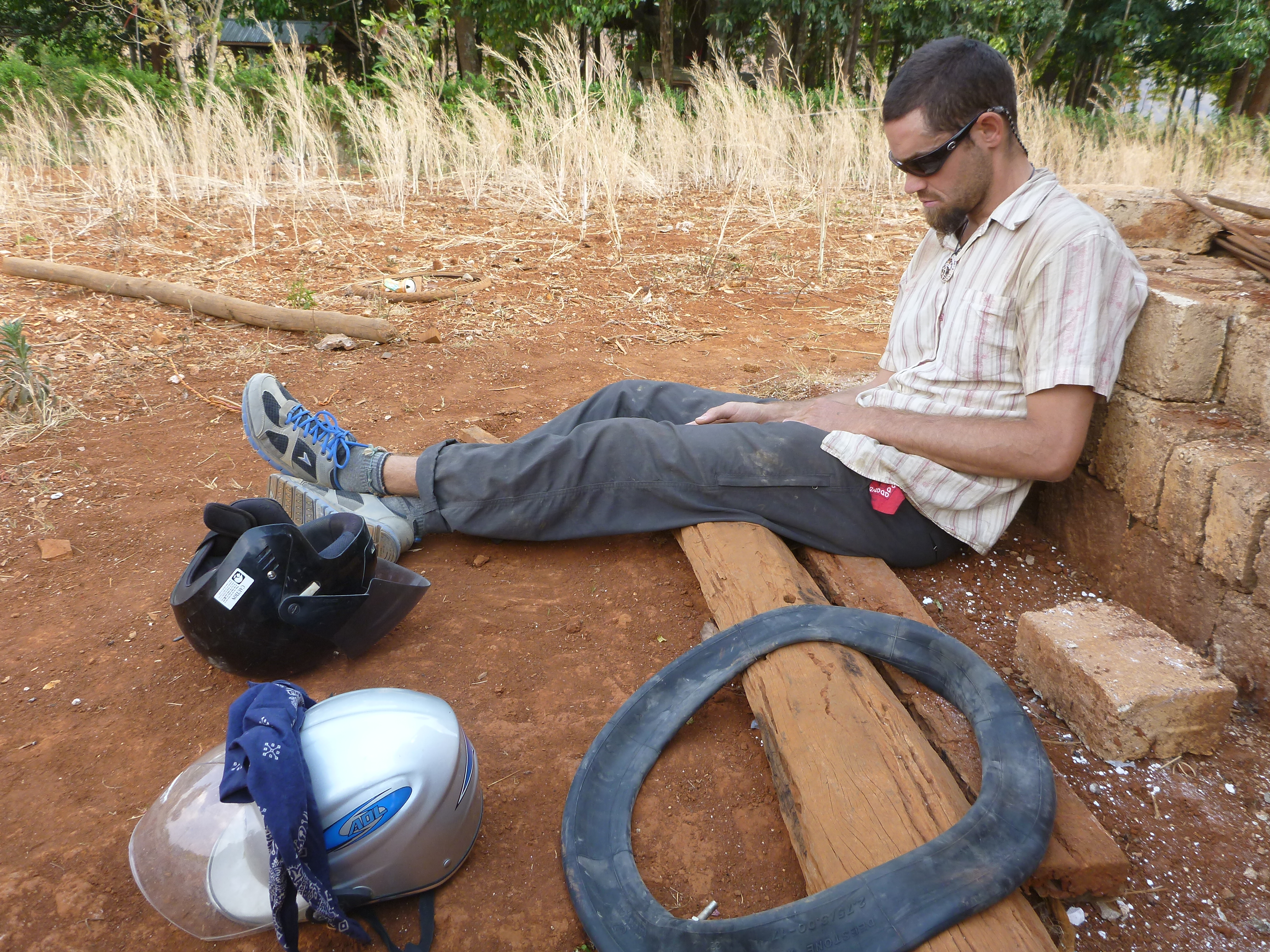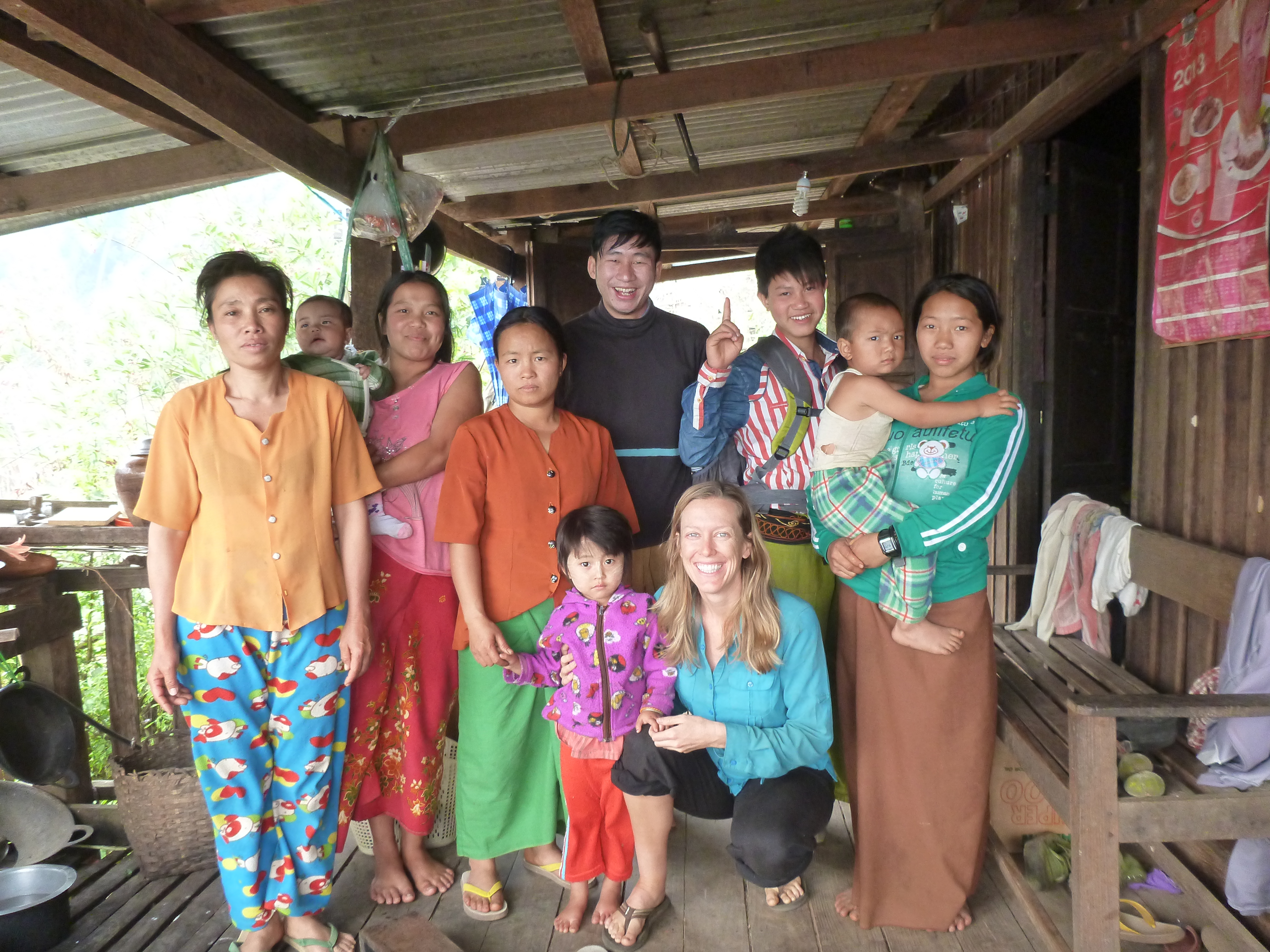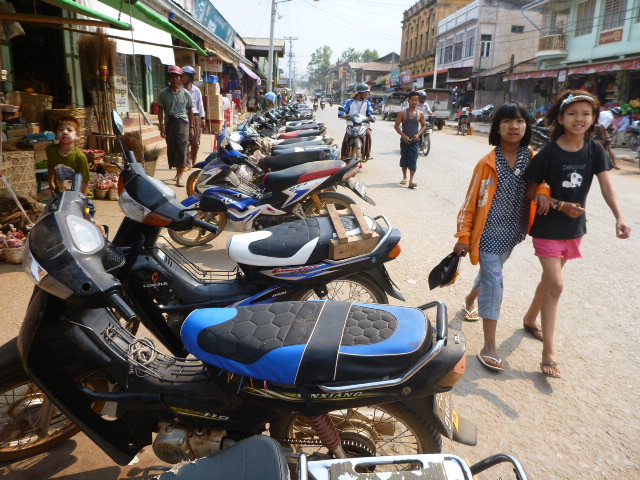Turning Towards Home: Trekking in Myanmar Part Two
“Yesterday, there was a war here,” said Romeo, our Burmese trekking guide. He was holding a hand-drawn map, and pointing to the spot where we were about to embark on a 3-day hike through northeastern Myanmar.
“Wait, what?” I said. “A war? What do you mean, ‘war’?” I asked half in fear, half in confusion. Just a minor shooting, he reassured me. Nothing to worry about. The Shan rebels have been fighting for their own independent state for decades. The recent escalation in fighting was part of a long-running cycle of give and take between ethnic minorities and the national army.
“They won’t hurt foreigners,” Romeo said. Then he turned to Rob: “But you must be alert as you drive the scooter on the highway. The Burmese special forces have road blockades set up.”
Rob and I exchanged glances, and then had a brief huddle. We decided to go ahead with our trek. After a 10-hour train ride from Mandalay the day before and hours of research into the best hikes in Myanmar, we were anxious to get up in the mountains.
Luckily, the mountains turned out to be just what we needed. The first two days and two nights were exactly what we’d been searching for in Southeast Asia: quiet forests, new cultures, and a chance to use our feet after a year floating on the sea. Rob and I were enjoying ourselves more fully than we had for weeks. We were chilled out. At peace. Finally in the moment instead of obsessing over what’s next.
But then Myanmar’s mountains kicked us in the butt. And stepped on our toes for good measure. The third morning, in the tiny village of Bong Lon, Rob woke up sick. Really sick.
I did some mental calculations: we were a 5 hour hike from the two old scooters that carried us and our two guides into the mountains. The scooters were parked in a village that required a two-hour ride over rocky, dirt roads to the nearest podunk town, which was a 10-hour train ride from the city, which was a two-hour plane flight from trustworthy health care across the border in Thailand.
But I didn’t panic. I simply rubbed Rob’s back when he returned from his fourth trip before breakfast to the hole in the ground that counted as the ‘toilet.’ I made sure he ate a few forkfuls of rice, filled our water bottles and packed our things.
I didn’t freak out when he made a dozen more trips into the woods, squatting behind tea trees and losing precious fluids. I started to get worried, though, when I came upon Rob sprawled out on the dusty trail, pale as a sheet, lying flat on his back in the sun because he was too sick to move. But I just put on his backpack and helped him to his feet – there simply wasn’t anything else to do but keep going.
I remained calm when we finally mounted the tiny, old scooters, even though I had butterflies in my pregnant belly at the thought of riding behind a driver who was not my husband. Rob slumped weakly behind the 15-year-old Burmese kid who couldn’t speak English, too incapacitated to drive himself. As we started down the worst road I’ve ever seen, it felt like taking a skinny-tired road bike down a boulder-strewn riverbed.
I barely even screamed as our scooter crashed into a particularly large rock and we went flying dangerously close to the edge of a drop-off. The back brake ripped off, but we escaped with only bruises on our legs. Still keeping it together, I ran down the hill to stop Rob and his driver.
I didn’t panic when I saw the Burmese soldier patrolling the road just in front of me, his AK-47 rifle prominently in tow. Instead, I sent up a brief prayer that no rebels were lurking nearby, waiting to start another “war” while we were caught like lame ducks in the middle.
I breathed a sigh of relief when Rob recuperated enough to drive the non-broken scooter down the mountain, and we left our guides behind. I even refrained from backseat driving as I clung to the tiny bar on the back of the scooter, shifting the heavy pack on my shoulders as we skidded over holes and boulders, inches from cows, drop-offs and passing tractors.
I held a handkerchief to my nose when we walked the scooter through roadside construction complete with barrels of boiling oil and rock-crushing machines spewing gravel at us. See, Bri, life could be worse, I told myself, as we passed women and children working to build the road, scrounging to survive in an arid and unforgiving land.
I didn’t curse when we got a flat tire a mere two kilometers from the only hotel in town, after surviving the harrowing mountainside scooter ride. In fact, I even laughed at the irony of the situation, and took a picture of Rob slumped, defeated, in the dust, while a Burmese mechanic changed our tire for 50 cents.
We made it to the hotel. Rob ran for the bathroom while I haggled over a suitable room.
I still didn’t freak out when I found the bags we’d stowed strewn across the hotel’s storage room. Or when I found our prized possession – the beat-up Panamanian guitar – being played by a lounging hotel staff member. I just snatched the guitar away, and marched off to our room to dose my wilted, feverish husband with Immodium and Cipro.
But then. Oh, but then. I lost it because of a shitty shower. After Rob fell asleep, I stepped in to wash off the days of dust and grime and who-knows-what germs. To sluice away the day’s trials in hard-earned hot water. But the shower didn’t spray down on me. It didn’t even drip down on me. It just sprayed sideways, on the toilet and the sink and the window. That’s when I finally cried.
Still dirty, I dragged myself to the bed and stared out the window, trying to sort through what we should do next. As I pondered, it snapped. TWANG!
Not my brain, not my body, not Rob’s bones. A guitar string. TWANG!
We hadn’t broken a string in 6,000 miles of sailing the Pacific Ocean. After driving 800 kilometers with the guitar precariously strapped to the back of a motorcycle. During thousands of songs performed for strangers on foreign streets around the world.
But the guitar string snapped in that moment, all by itself, sitting in the corner of a hotel in Myanmar. To me, that snapped string represented our travel karma. It had reached the breaking point after so many good memories and too many near-misses.
I looked at the calendar, and realized it was exactly one year to the day that we had closed the door on our life in Montana, walking away from our home to begin this adventure. Ironic? Or cosmic? Either way, I didn’t need another sign.
When Rob woke up, his fever down and slightly more coherent, he asked what I thought we should do. “Go home,” I said immediately, assuredly. “Let’s just go home.”
“I’m certainly not going to argue with you,” he replied with the ghost of a grin.
It took us four days and four nights to travel from Bong Lon to Bellingham. Why Bellingham? Because it seemed fitting to end our year-long adventure with the same friends we began this journey with last spring. After two buses, two taxis, three flights, and an arc from Dubai across the North Pole, we arrived on U.S. soil to find Mark and Katie waiting with open arms.
In the mountains of Myanmar, the universe told us it was time to start the next chapter. We listened. We were ready. We are home.













